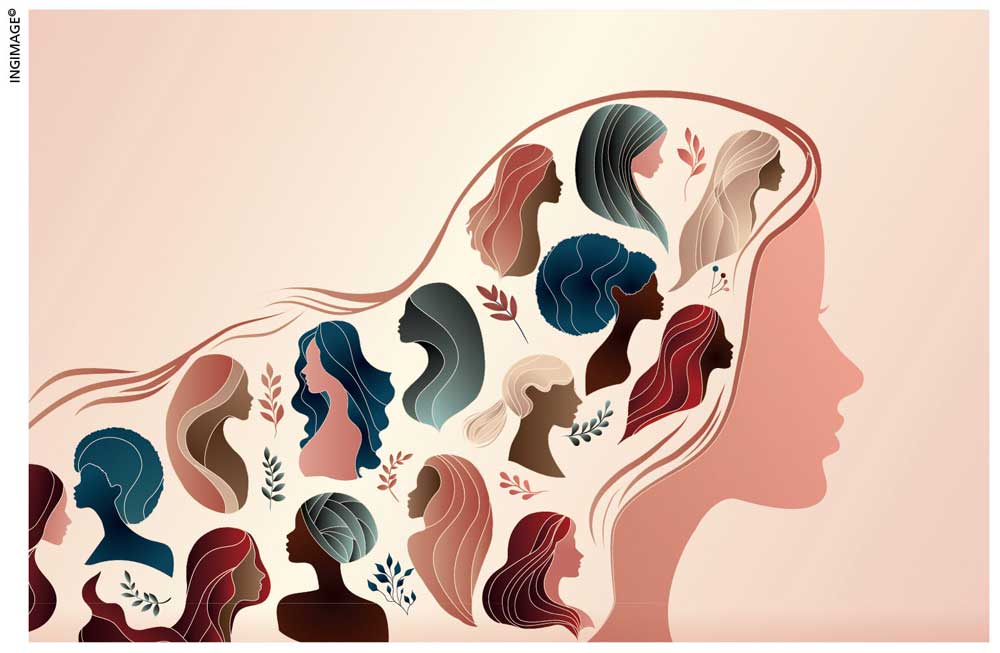
IN PURSUIT OF INCLUSIVITY
Ruwandi Perera highlights the challenges that hinder technology inclusion

The world is celebrating International Women’s Day on 8 March, and the conversation is all about investing in women and accelerating progress. While there’s plenty to celebrate in terms of humanity’s successful efforts to transform a man’s world into something more than that, progress hasn’t been significant – there’s a lot more to do.
Simply put, much more needs to be done to achieve gender parity.
Isn’t it ironic that at a time when we are travelling through space and unearthing mysteries in the ocean, gender issues continue to pose problems? Haven’t humans progressed enough – physically, mentally, emotionally and socially – to achieve gender equity?
In fact, there’s nothing to celebrate since having it is a no-brainer.
Last March, during a discussion with women civil society leaders held as part of the annual session of the United Nations Committee on the Status of Women, UN Secretary-General António Guterres highlighted the severity of gender discrimination.
He noted: “Many of the challenges we face today, from conflicts to climate chaos and the cost of living crisis, are the result of a male dominated world – with a male dominated culture taking the key decisions that guide our world.”
Sad? Yes!
True? It sure looks that way.
Technology has been a lifesaver when it comes to combatting discrimination. It’s helped break language, geographic and physical barriers stemming from disabilities, financial barriers and much more. Yet, whether we have achieved enough in terms of tech inclusion is questionable.
In an article on technology and gender equality last year, UN Under-Secretary-General and Executive Director of UN Women Sima Sami Bahous states that three billion people still remain unconnected to the internet – and the majority of them are women and girls.
She notes that even the women who are connected to the internet have to battle various dimensions of discrimination including education and autonomy to name two.
In addition to the majority of women not enjoying equal rights when it comes to education, skills development, careers and even family life, they also have to combat tech discrimination and bias.
Social media, which seems to be taking the blame for many things today, is accused of giving rise to several challenges such as gendered disinformation, misinformation, online violence and sexist hate speech, all of which adversely impact women and other minority groups.
Additionally, there are online attacks that range from abusive and insulting language, to deliberate embarrassment, body shaming and threats of sexual violence.
And the plot thickens…
There are also concerns that AI may be used to exacerbate these challenges, be it consciously or unconsciously.
These online issues are by no means targeted only at women; and while they’re not the only recipients of online attacks, they make up a large proportion of victims. And men aren’t the only attackers; males are in fact trying to help fix the issues at hand.
The causes may vary but the truth remains: women lag behind men when it comes to the effective use of technology. The time had always been right to work towards a more gender equitable world and now, the clock is ticking even faster.
While celebrating the wins of and for women, which are commendable, there’s a lot to be done.
In the tech space, it is vital to ensure that technology platforms (be they global, regional or local) are designed to uphold and ensure human rights, openness and accountability.
The power imbalances between the genders must be addressed at all levels – beginning with the family and school, all the way up to business and government.
Gender equity is and should be a basic foundation upon which the world is built because progress means developing together, ensuring better living standards, building stronger economies, mitigating climate change and creating a safer world.
Everyone counts. And unless all are accounted for, the global populace will always function below its potential. Time is precious when it comes to saving the world. A look at the daily global news roundups shows an unhealthy focus on wars, climate chaos and unrest.
Since technology comprises a large portion of the answer to the world’s problems, let’s make sure that its availability and use is both just and equitable.





